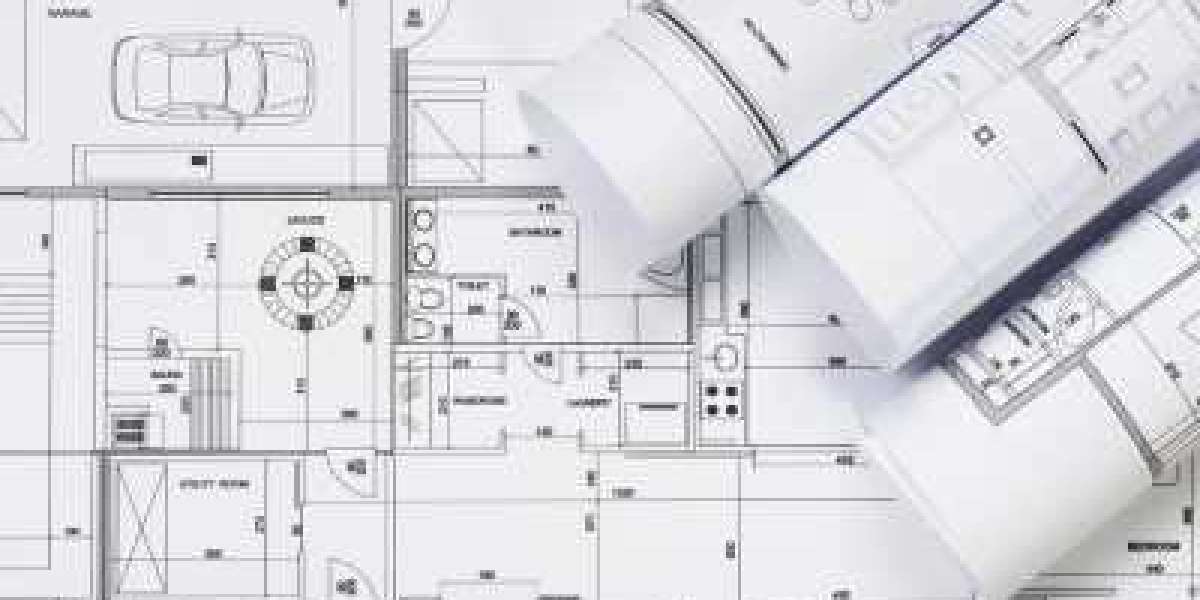The building drawings' precision and thoroughness are crucial to home construction's success. Competent construction drawing services produce these documents, which are the cornerstone of the project and guarantee clarity, compliance, and smooth execution. Thorough construction drawings enable architects, builders, and contractors to work together efficiently by converting an idea into workable designs. Here, we examine these designs' key elements and their importance in residential construction.
A Detailed Guide on Components of Residential Construction Drawings
Site Plan
The site plan provides an overview of the land and displays the building's layout and how it interacts with the surroundings. It describes zoning regulations, utility connections, property lines, and building locations. A carefully thought-out site plan guarantees the project complies with local laws and blends with its surroundings. It establishes the framework for later construction drawings and is frequently the initial stage of architectural planning services.
Floor Plans
A vital component of construction drawings is floor plans, which show the internal arrangement of the building. Along with precise measurements, they show how the rooms, walls, windows, and doors are arranged. Every step of the construction process, from framing to finishing, is guided by floor plans, which guarantee functionality and alignment with the homeowner's expectations by clearly depicting the design.
Elevation Drawings
Elevation drawings show the building's external façade in great detail. They cover architectural styles, window and door locations, and external finishes like brick or siding. Elevations give contractors crucial information about external materials and architectural components while enabling homeowners to predict the structure's appearance. They guarantee that the building's external design complements the intended architectural style.
Sections and Details
Cross-sectional views of the walls, floors, roofs, and sections and details allow a deeper look at particular building components. These illustrations highlight the materials, insulation, and connections that make up the structure's inside. They are essential when dealing with intricate spaces like roof junctions or staircases. Sections and details that deconstruct these components guarantee the building's structural soundness and help contractors navigate complex construction procedures. Architectural planning services are critical in developing these detailed drawings, ensuring they are accurate and aligned with the overall design vision while supporting the construction team throughout the build.
Electrical and Plumbing Plans
Plans for the plumbing and electrical systems are essential to the residential project's operation and security. Electrical plans display wire schematics, circuit data, and the locations of outlets, switches, and fixtures. Plumbing designs show where drainage systems, fittings, and pipes should be placed.
Combined, these designs provide the smooth integration of utilities into the structure, lowering the possibility of mistakes and guaranteeing compliance with building requirements. These designs are frequently created in conjunction with construction drawings to ensure efficiency.
Foundation Plan
The foundation plan describes the type and size of the building's foundation and contains information on soil conditions, reinforcing, footings, and slabs. A solid foundation plan guarantees the building's stability and longevity. It covers possible problems like soil settlement and gives contractors the knowledge they need to construct a sturdy and dependable foundation for the house.
Schedules and Notes
Important project information is compiled into schedules and notes for convenient access. Specifications for windows, doors, finishes, and fixtures are frequently included in these documents. Schedules and notes condense vital information to reduce misunderstandings and enhance stakeholder communication. They guarantee the precise application of materials and finishes, which raises the project's overall quality.
Why Comprehensive Construction Drawings are Important
Comprehensive construction drawings are the foundation of any successful home project; they are more than technical documentation. They make things more straightforward, reduce mistakes, and encourage cooperation from everyone. Furthermore, detailed drawings guarantee that the project satisfies the client's requirements and meets local standards. Homeowners can accomplish a seamless and effective building process by combining construction drawing services with professional architectural design services.
Final Takeaway
Detailed building drawings are necessary to take a residential project from idea to completion. Every element guarantees accuracy, effectiveness, and compliance, from site plans to comprehensive schedules. Collaborating with skilled experts in architectural design and construction drafting services is the secret to a successful build. With precise and thorough drawings, homeowners may confidently realize their ideas while avoiding expensive errors and delays.











